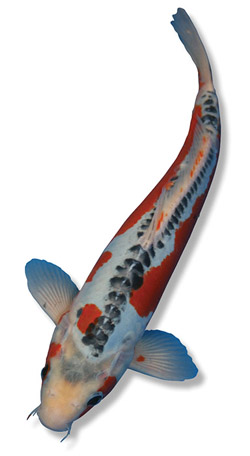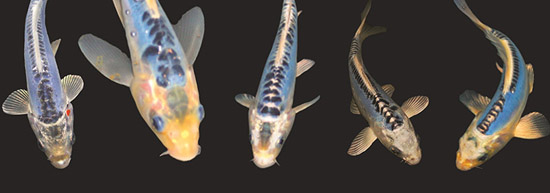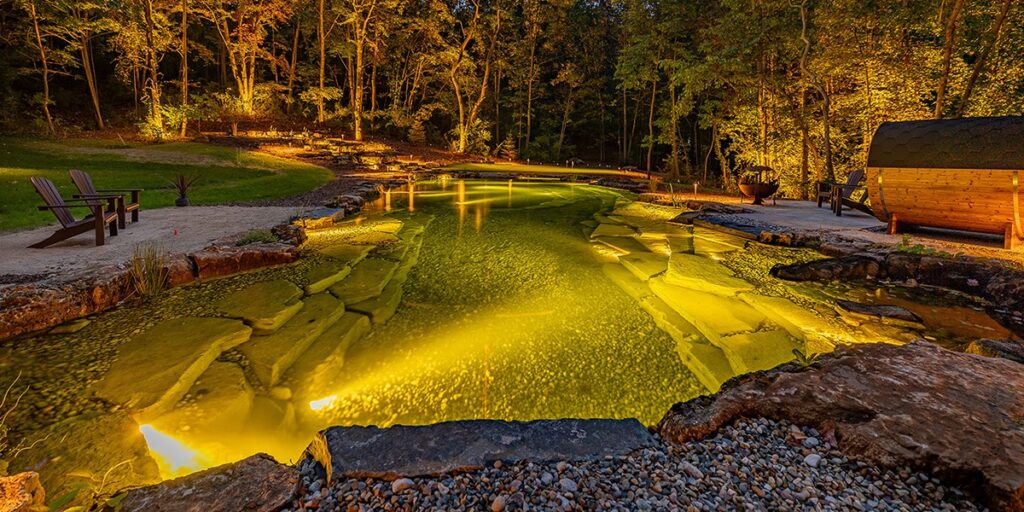WOW! That’s what I said after seeing the harvest of a special spawn we had been working on for quite some time. It was nice to finally see a glimpse of what we have worked so hard to create. We’ve fielded numerous phone calls and in-person requests in the past few years for rare and unique koi. We’ve been asked for some out-of-the-ordinary fish, and frequently for blue fish. About three years ago we decided to take these requests seriously and start work on producing a new variety of koi.

Although we were unsure what the outcome or our success would be, we just knew that we had to try.
Throughout the years I’ve been asked, “What makes koi farming appealing still after all this time?” I’d say, “It’s the challenge; the successes and the disappointments of pursuing new varieties and looks!” We swing for the fences—and end up striking out a lot. But, it only takes a few home runs to really charge us up to continue the chase for new and unique fish.
Goal: Produce a bright blue koi that would show great colors at an early age and would be affordable and enjoyable to many people.
How: Start with a blue tint in koi from another variety and monitor outcomes, adjusting as needed.
Where: Blackwater Creek’s central Florida location with the longest growing season and good, hard water.
Why: You would probably guess “profits”, but that’s definitely not number one. We do it because it hasn’t been done before; there’s something appealing about going into uncharted territory. It’s easy to buy someone else’s fish and use them for breeding stock, but it’s a much bigger accomplishment to develop your own. That’s where I find the most pride at Blackwater Creek. Sure, it’s nice to sell them, but it’s more important that we are recognized for our efforts.
Blue Koi
There are variants of blue koi currently available throughout the world. These fish tend to either be a less vibrant blue/gray color, or a blue expressed only while the black coloration has not developed completely on the surface of the fish (such as the Kumonryu). With these blue fish, the hobbyist must typically wait for the fish to grow large to develop the blue coloration. My goal at Blackwater Creek was to have a vibrant blue color in koi at a young, affordable age.
Metrics of Success
Success: repeatable results with multiple spawns of different parents, with prevalence rates of 2 percent or higher. At least 2 percent of the offspring (or more) were of the desired look/outcome.Color Fastness—Colors should be vivid and true in both warm pond water and cool tank/well water.
Metrics of Quality
1. Blue color should be as deep blue as possible. Blue colors tend to wash out when combined with other colors, so it’s a challenge.
2. Intensity of iridescence and bright, shiny, metallic sheen are important. We like to call it “hard chromium white.” This color tends to mask the blue intensity, so producing both together increases the value and rarity.

Sapphire koi have continued to evolve with each generation. We are far from perfect and I am never satisfied. As I look forward, I think of all the other variants and phenotypes we should incorporate into this line. I am sure there will be some great success—along with some disappointment—in the search for the next bigger nugget, or the next bigger and brighter gem. Gosh, I love this profession!



I am very interested in the new Sapphire koi. I want to know if they can be bought old enough to be able to determine the sex. Can an individual buy these?
From Joe Pawlak, Blackwater Creek Koi Farms:
The sahire koi are a special breed that come from only select parents . Currently the sapphires are sold at a smaller age with undetermined sex. Purchasing multiple fish gives a better chance of getting males or females.
How does someone purchase these?? Would love some for a tank!!
Hi Brandi.
You would need to contact Blackwater Creek Koi Farms. Joe Pawlak wrote the article, and he is the owner. I actually have some in my pond and they are beautiful. Check out their website or give them a call!
Lora Lee Gelles
Publisher, POND Trade magazine